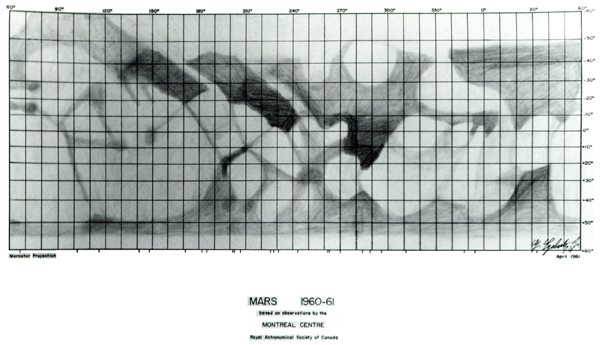One of the truly remarkable, and characteristic aspects of the best amateur astronomy is that it can contribute to real science in some areas. This was certainly acknowledged, and encouraged by some prominent professional astronomers in the period of the late 19th, and early 20th century, which in restrospect appears to have been one of the "golden" periods for serious amateur astronomy. Harlow Shapley's and George Ellery Hale's statements on the value of amateur work for science can be found in Amateur Telescope Making, ed. Alnbert G. Ingals (n.p.: Munn and Company, 1935). And they were certainly not alone in encouraging amateurs to do more than mere celestial sightseeing:
"Professor Coolidge, of the department of Mathematics at Harvard, remarked that amateur work in Astronomy has unusual professional value, and is inspiring" (Arville D. Walker, "Monthly Report of the American Association of Variable Star Observers, September 20 to October 20, 1921", in Popular Astronomy 29 [1921], 646-662, at p. 661 [Julian Lowell Coolidge, 1873-1954, Professor of Mathematics at Harvard]).
and
"Work for Amateur Astronomers.-Professor Edward C. Pickering, of the Harvard College Observatory, invites amateurs who have small telescopes to the observation of the variable stars, and assures then that by systematizing their work, and each selecting a particular field, they can not only observe with more satisfaction to themselves, but may aid the progress of science. Some may make real discoveries..." (The Popular Science Monthly vol. 42, no. 46 [1883 April], 682-683)
and, finally
"There is a feeling current among us that discoveries in astronomy, or indeed in any of the sciences, can only be made with costly instruments in the hands of professional scientists. It is of course true that the better equipment one posesses the greaer will be the chances of successful investigation of any problem, but it is nevertheless also true that much can be done with very simple apprarartus, and that too in the hands of amateurs" (W.E., Harper, "The Rôle of the Amateur in Astronomy", in JRASC 23, 8 [1929 October], 367-371).
Information on the present-day institutions and projects which encourage amateur astronomers in the direction of contributing to science are the:
- American Association of Variable Star Observers
- Society for Astronomical Sciences
- Journal of Double Star Observations
- International Meteor Organization (IMO)
- Association of Lunar & Planetary Observers
- British Astronomical Association
- Zooniverse
And, for an admirable local initiative, see Dwingeloo Radio Telescope - C.A. Muller Radio Astronomy Station.
Amateur astronomers contributing to science are now seen to be practising "citizen science". A multidisciplinary overview of citizen sceince is offered by Caren Cooper in Citizen Science: How Ordinary People are Changing the Face of Discovery (London: Duckworth Overlook, 2016) (note: while good on the present situation, the sections on the history of citizen science are not reliable).
A snapshot from three decades ago of the state of amateur astronomy contributing to real science can be found in: Stargazers: The Contribution of Amateurs to Astronomy. Proceedings of Colloquium 98 of the IAU, June 20-24, 1987, ed. S. Dunlop, & M. Gerbaldi (Berlin–Heidelberg–New York–London–Paris–Tokyo: Springer-Verlag, 1988).
The history of an institution whose sole raison d'être is the gathering, reduction, analysis, and dissemination or variable star data mostly acquired by amateurs, is Thomas R. Williams & Michael Saladyga, Advancing Variable Star Astronomy: The Centennial History of the American Association of Variable Star Observers (Cambridge–New York–Melbourne–Madrid–Cape Town–Singapore–São Paulo, Delhi–Tokyo–Mexico City: Cambridge University Press, 2011).
Studies on some of the RASC members mentioned in this episode are:
- Peter Broughton, "Daniel Knode Winder (1828-97), the First President of the Toronto Astronomical Club", JRASC 102, 6 (2008 December), 238-241
- J.R. Collins, "Allan Frederick Miller, 1851-1947", JRASC 41, 3 (1947 March), 127-128
- J. Percy, "Joseph Miller Barr Revisited", JRASC 109, 6 (2015 December), 270-271
Some of the meteoritical work by RASC amateurs mentioned is:
- F.K. Dalton, "Microhardness Testing of Iron Meteorites", JRASC 44, 1 (1950 February), 1-11
- F.K. Dalton, "Microhardness Testing of Iron Meteorites (Continued)", JRASC 44, 5 (1950 September-October), 185-195
- F.K. Dalton, "Microhardness Testing of Iron Meteorites (Concluded)", JRASC 45, 4 (1951 July-August), 145-156
- Anthony J. Whyte, The Meteorites of Alberta (Edmonton: The University of Alberta Pres 2009)
The planetary work at the Montreal Centre of the RASC during theyears 1959-1960 can be sampled at:
FInally, and certainly not least, the late-Victorian handbook to doing serious astronomy by RASC honorary member William F. Denning is Telescopic Work for Starlight Evenings (London: Taylor and Francis, 1891).
—R.A. Rosenfeld
A transcript of this podcast is available
| Attachment | Size |
|---|---|
| 192.49 KB |

